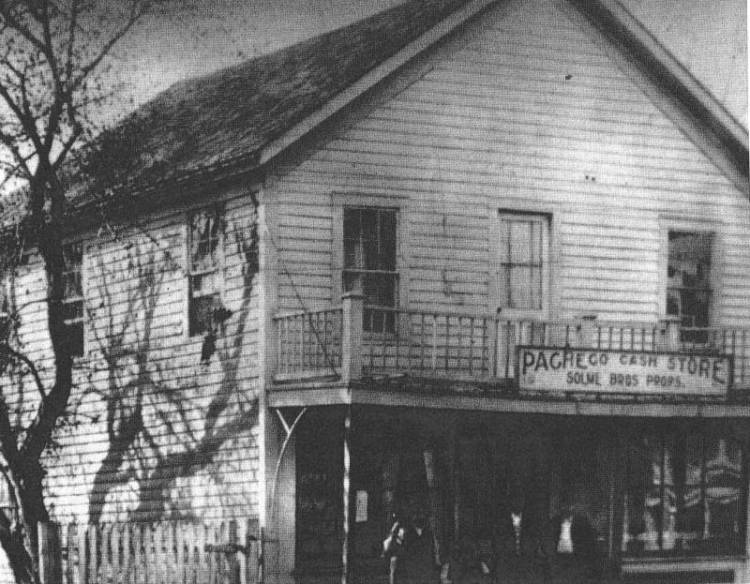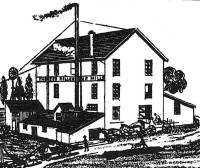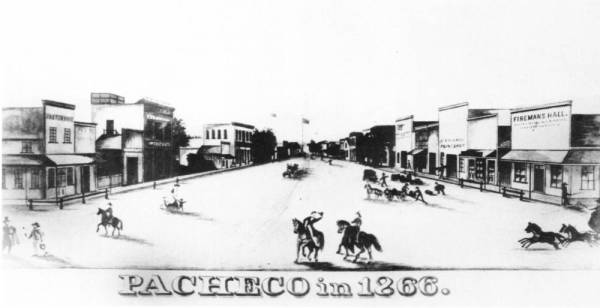The village of Pacheco was laid out in 1857 on land purchased by William Hale H.H. Fassett, and Dr. purchased Carothers at the head of navigation of Pacheco Slough, four miles from Suisun Bay. At that time the slough was deep enough for ocean-going sailing vessels; Pacheco became one of several shipping points for wheat and other produce grown in Contra Costa. In October 1866 the Contra Costa Gazette reported that more than 600,000 sacks of wheat had delivered that month to warehouses in Pacheco to be loaded on outgoing ships. The next month the newspaper noted that the streets of Pacheco were so crowded with wagon teams carrying wheat to the harbor that crossing the streets was impossible.

Because of its importance as a port Pacheco became the largest town in the county. Main Street was lined with stores on both sides. The Solme Bros. Pacheco Cash Store, shown below left, sold groceries, farm implements, and work clothes.
Another notable building was Elijah Hook’s two story Farmers’ Block, built in 1860. The lower floor housed a general store and a Wells Fargo office; the upper floor was occupied by the. Contra Costa Gazette, which was published in Pacheco from 1861 to 1873.

The principal landmark in Pacheco was a steam powered flour mill, four stories high, shown in the sketch below right. It was built in 1857 by William T. Hendrick on land he bought from George P. Loucks, one of the early settlers.
At this time Pacheco also had a lumber yard, soda works, leather shop, brickyard, saddle shop, blacksmith shop and two hotels. Pacheco did not fare well: the flour mill burned down in 1867; an earthquake wrecked the town in 1868, and then a succession of fires and floods hit during the next few years. Pacheco Slough filled with silt and was no longer navigable.

By 1870 most merchants and residents had moved to the new town of Concord or to other places. The flour mill did get rebuilt and continued in operation till 1912, under a succession of owners, but the rest of the town was virtually deserted. Pacheco continued as a quaint country village until the 1960s ‘ when the population explosion brought tract homes and SunValley Shopping Center. Two Pacheco people deserve a special place in history: Annie Loucks, teacher at Pacheco Grammar School, beloved by several generations of former students, and Dr. Mariana Bertola, physician, humanitarian, and president of a unique California organization, Native Daughters of the Golden West. Two forerunners; of modem agricultural machinery were developed in Pacheco: the Standish Steam Plow and the Dalton Gang Plow.

You must be logged in to post a comment.